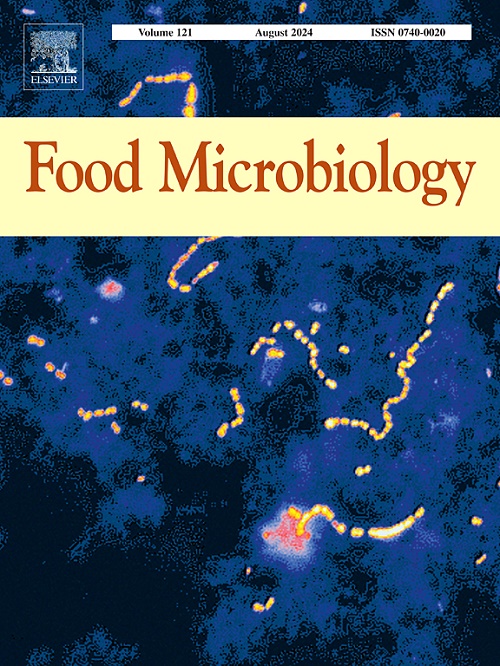Enhancing freeze-thaw tolerance of yeast using silver carp muscle hydrolysate: Transcriptomic insights into cryoprotective mechanism
IF 4.5
1区 农林科学
Q1 BIOTECHNOLOGY & APPLIED MICROBIOLOGY
引用次数: 0
Abstract
This study aimed to investigate the improvement effects of a silver carp muscle hydrolysate (SCMH) on freeze-thaw (FT) tolerance of baker's yeast and the related mechanism. Yeast cells with or without addition of SCMH were subjected to 0 to 6 FT cycles, and their cell viability, leavening activity, growth kinetics, morphology, and transcriptome were examined. The results showed that the SCMH-added yeast had significantly higher cell viability (40.7 %), leavening activity (473.2 mL kg−1·h−1), and maximum specific growth rate (2.63 h−1) than those in control (CK) group (0 %, 287.2 mL kg−1·h−1, and 1.74 h−1, respectively), after 6 FT cycles. Frozen-thawed yeast with SCMH also exhibited better cell structural integrity compared to that of the CK yeast. Transcriptomic analysis revealed that the incorporation of SCMH led to significantly increased counts of differentially expressed genes (DEGs) in yeast cells after 6 FT cycles, and transcriptionally regulated the pathways associated with ribosome biogenesis and function, amino acid metabolism, carbohydrate metabolism, and lipid metabolism. Therefore, the SCMH could help yeast withstand FT stress, likely via a dual mechanism for inhibiting ice growth and inducing some freeze-adapted transcriptional regulation.
利用鲢鱼肌肉水解液增强酵母的冻融耐受性:低温保护机制的转录组学研究
本试验旨在研究鲢鱼肌肉水解液(SCMH)对面包酵母冻融耐受性的改善作用及其机制。添加或不添加SCMH的酵母细胞进行0至6个FT循环,并检测其细胞活力、发酵活性、生长动力学、形态和转录组。结果表明,经6次FT循环后,添加scmh的酵母细胞活力(40.7%)、发酵活性(473.2 mL kg−1·h−1)和最大特定生长率(2.63 h−1)显著高于对照(CK)组(分别为0%、287.2 mL kg−1·h−1和1.74 h−1)。与CK酵母相比,SCMH冻融酵母也表现出更好的细胞结构完整性。转录组学分析显示,在6个FT周期后,SCMH的掺入导致酵母细胞中差异表达基因(deg)计数显著增加,并通过转录调节与核糖体生物发生和功能、氨基酸代谢、碳水化合物代谢和脂质代谢相关的途径。因此,SCMH可以帮助酵母抵抗FT胁迫,可能是通过抑制冰生长和诱导一些适应冷冻的转录调节的双重机制。
本文章由计算机程序翻译,如有差异,请以英文原文为准。
求助全文
约1分钟内获得全文
求助全文
来源期刊

Food microbiology
工程技术-生物工程与应用微生物
CiteScore
11.30
自引率
3.80%
发文量
179
审稿时长
44 days
期刊介绍:
Food Microbiology publishes original research articles, short communications, review papers, letters, news items and book reviews dealing with all aspects of the microbiology of foods. The editors aim to publish manuscripts of the highest quality which are both relevant and applicable to the broad field covered by the journal. Studies must be novel, have a clear connection to food microbiology, and be of general interest to the international community of food microbiologists. The editors make every effort to ensure rapid and fair reviews, resulting in timely publication of accepted manuscripts.
 求助内容:
求助内容: 应助结果提醒方式:
应助结果提醒方式:


